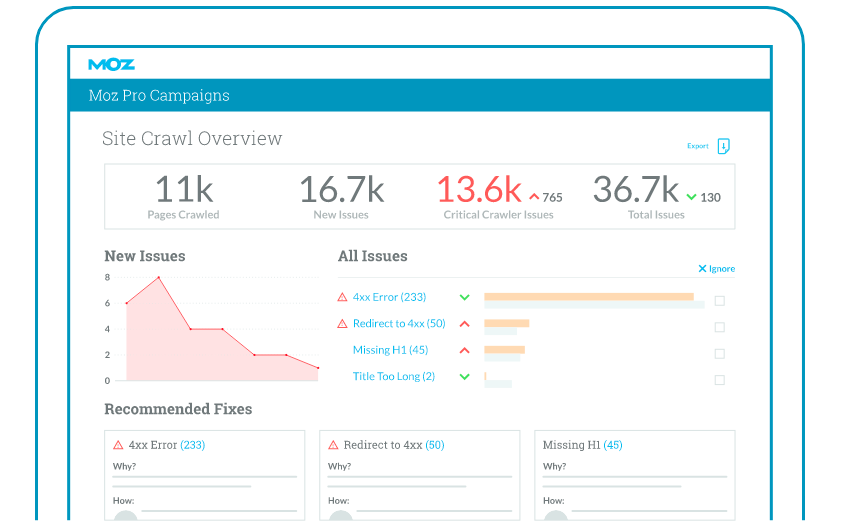Sending your data to our servers, please wait...





Oops... No results found.
Please try a different search phrase.
SEO 8 min read
Three Reasons Why Galactic Fed Only Uses White Hat SEO Practices
Written by Ayesha Renyard
Content Writer @ Galactic Fed
Expert reviewed by Dallin Porter
Marketing Director @ Galactic Fed
Published 10 Mar 2021
In the Galactic Fed blog, we’ve shed light on a multitude of SEO-related topics. A common thread in all of these posts? That SEO is incredibly important for your search rankings and visibility. But it takes time—it’s not a side-of-your-desk task. Why? Because if you’re going to do SEO the right way, you’ll be doing white hat practices.
What is White Hat SEO?
In essence, white hat SEO refers to site optimization tactics in line with the terms and conditions of major search engines, including Google. We recommend that you check out Google’s Webmaster Guidelines. It’s a great resource to learn about white hat SEO—with a complete description of Google-approved techniques.
Source: Crazy Egg
From the image above, you can see that white hat strategies are all about quality—from technical functionality, to content, to backlinks. White hat SEO strategies are ethical and focus on maintaining your site’s integrity. Black hat SEO, in contrast, involves deceitful tactics such as purchasing backlinks or using deceptive cloaking techniques.
Here at Galactic Fed, our SEO experts only use white hat tactics for our clients. Why?
1. It lays the foundation for a sustainable, long-term SEO strategy
When working with our clients, the goal is to build a growth marketing strategy that’s sustainable and considers their long-term needs. Not to toot our horns, but we like to think of ourselves as a team of Yodas—helping young Padawans understand and eventually execute their own SEO campaigns one day.
Source: Giphy
And while white hat SEO takes time, it’s actually pretty easy to maintain once it’s up and running.
Here are some ways we’d kickstart our clients’ white hat strategy:
- Create a library of quality content: Creating good content takes time, which many of us don’t have! With in-house writers trained to write long-form pieces with attention to target keywords (without keyword stuffing—that’s black hat stuff!), we get your blog up and running with quality, shareable content.
Are you finding it tough to publish articles consistently? We can continue to pump your website with content that search engine crawlers will love.
- Build backlinks from websites with high domain authority: Quality backlinks can be tricky to get, especially if you’re a new brand or website. Thus, paying for links—a black hat tactic—can be tempting. But by creating compelling content that speaks for itself, we’ve been pretty darn successful at a volunteer-based link-building process.
With that said, there’s a fair bit of research and outreach involved to establish these links. So we do the initial legwork to build a backlink portfolio that’ll show search crawlers you’re the real deal.
- Assess on-page SEO and make recommendations: On-page SEO has to do with parts of your website in your control. Yet, many clients find it the most intimidating. “What’s working and not working?” “What needs to be optimized?”
If you plug your website into an SEO tool, such as Moz.com, and conduct a technical site audit, the results can be scary stuff. From page speed and mobile optimization, to broken links and redirects, we show our clients how to spring clean their website to ensure it’s in tip-top shape.

Source: Moz.com
2. It avoids the possibility of being penalized or delisted
To remind you, SEO or search engine optimization is the practice of increasing both the quality and quantity of traffic to your website through organic search results.
The higher you are on the search engine page rankings (SERPs), the more traffic you’ll get. Makes sense, right?
Who has control over your ranking? Search engines like Google. And they’ll rank your website according to the user experience you offer searchers. If two websites target the same keywords and provide similar content, but one has a slow load time, they’ll rank the faster-loading website higher on the SERPs.
Search engines won’t connect their users to poor experiences because they want them to continue to use their services. It’s like a “guilty by association” scenario. If your website creates a bad experience for users, they’ll want nothing to do with you and will rank you low in the SERPs so nobody can find you (organically, anyway).
What happens when you don’t play by their rules
If you try to work around search engines’ standards with deceptive black hat techniques, be prepared for some severe penalties:
- Drop in the rankings: Your ranking for your targeted keywords will drop dramatically.
- Delist from the search engine: Your website will no longer list on search results.
As you can see in the graph below, once your website is flagged for black hat practices, your rankings—and consequently, your traffic—drops hard and fast!
Is jeopardizing our clients’ rankings and traffic worth it? Nope!
Source: Neil Patel
3. It creates a user experience that supports business growth
When we preach the importance of a positive user experience, the end goal isn’t to get into Google’s good books and improve SERPs rankings—and that’s it! We want to emphasize that white hat SEO breeds a user experience that supports more conversions. Caught your attention?
We repeat: Having these white hat practices in place will help you score quality traffic, repeat visitors, and ultimately, more customers. Here’s how:
- Quality traffic: If search engines rank you high on SERPs, it means that they believe you’re well-equipped to answer a searcher’s inquiry. They don’t make this assumption out of the blue. Your website clearly demonstrates the value it offers to searchers—and white hat SEO practices—such as having awesome content—helped you get there!
And with authoritative backlinks from similar content, this association is made more explicit to search crawlers. Bonus points: they bring in more relevant traffic from these websites.
- Repeat visitors: Sometimes, people ask us what the point is of having a blog? It doesn’t bring in sales, does it?
In addition to using content, such as blog articles, to target keywords and boost SEO, we also believe it adds value to your brand. You offer resources to your visitors—free of charge. This builds trust with your audience. And although it may not make a sale today, this relationship-building will increase the likelihood of a conversion tomorrow.
- More customers: Once all that quality traffic—and repeat visitors—are ready to sign up for your service or purchase your product, does your website make it easy? Is it clear to navigate? Is it mobile-friendly? How fast is the page load time? The last thing you want is a prospect trying to make a purchase, and the page doesn’t load fast enough—so they bounce.
On-page SEO is technical mumbo jumbo for many, but its role in converting customers can’t be understated, which is why we prioritize it in our white hat approach.
Slow and steady wins the SEO race
The promises of black hat SEO practices can be tempting. But like pyramid schemes and crash diets, they’re indeed too good to be true.
We believe that white hat SEO is worth the time and effort—and that’s why we do it. But we do this stuff for a living. We have the time. So if you don’t, reach out to us!

Ayesha Renyard
Content Writer @ Galactic Fed



